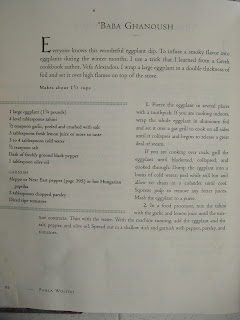From Roden's "The new book of Middle Eastern food".
My pita adventure left a nice mess in the kitchen. Definitely didn't help that I was trying to quickly finish up before running off to meet some friends.
I baked the bread's in the oven for 3 minutes (on the lower end of the 3 to 5 minute range). By that point, they really hadn't browned at all and tasted slightly undercooked. This afternoon, I toasted one that I had frozen -- it browned, but became quite hard/brittle. Next time I reheat one, I'm going to bake instead of toast and maybe sprinkle a little bit of water on, like some of the experts suggest.
They also turned out much thicker than I had hoped (certainly when compared against the standard store-bought versions). When I rolled them out, they seemed sufficiently thin (at about 1/8 of an inch), but I guess the cooking process really makes it expand.
One other note: the recipe claimed that the dough should be allowed to rise over a 20 minute period after being rolled out. As far as I can tell, though, my dough didn't rise at all after that point. Perhaps because I let it rise too much during the initial stage, there was no oomph left in the yeast?









































